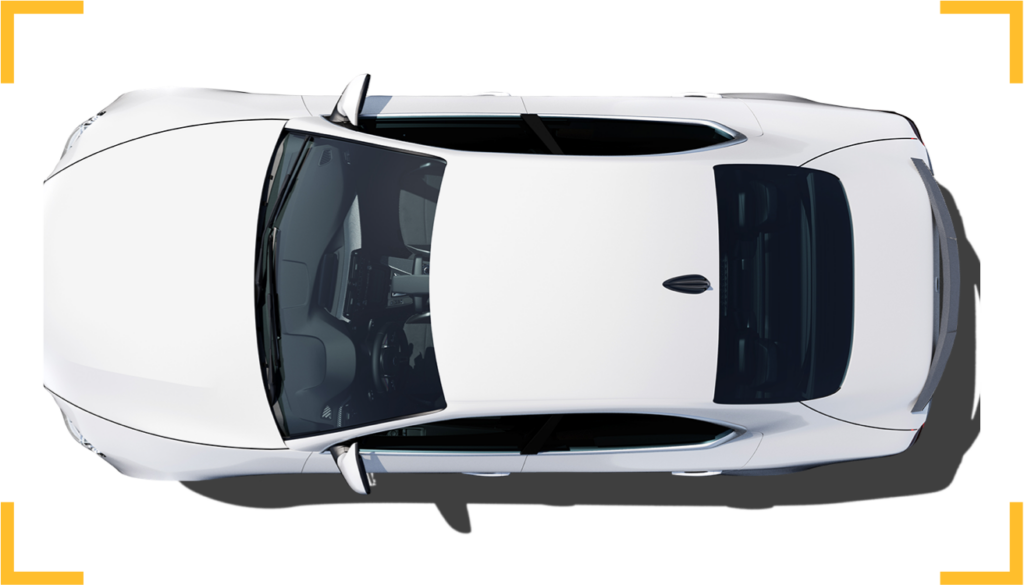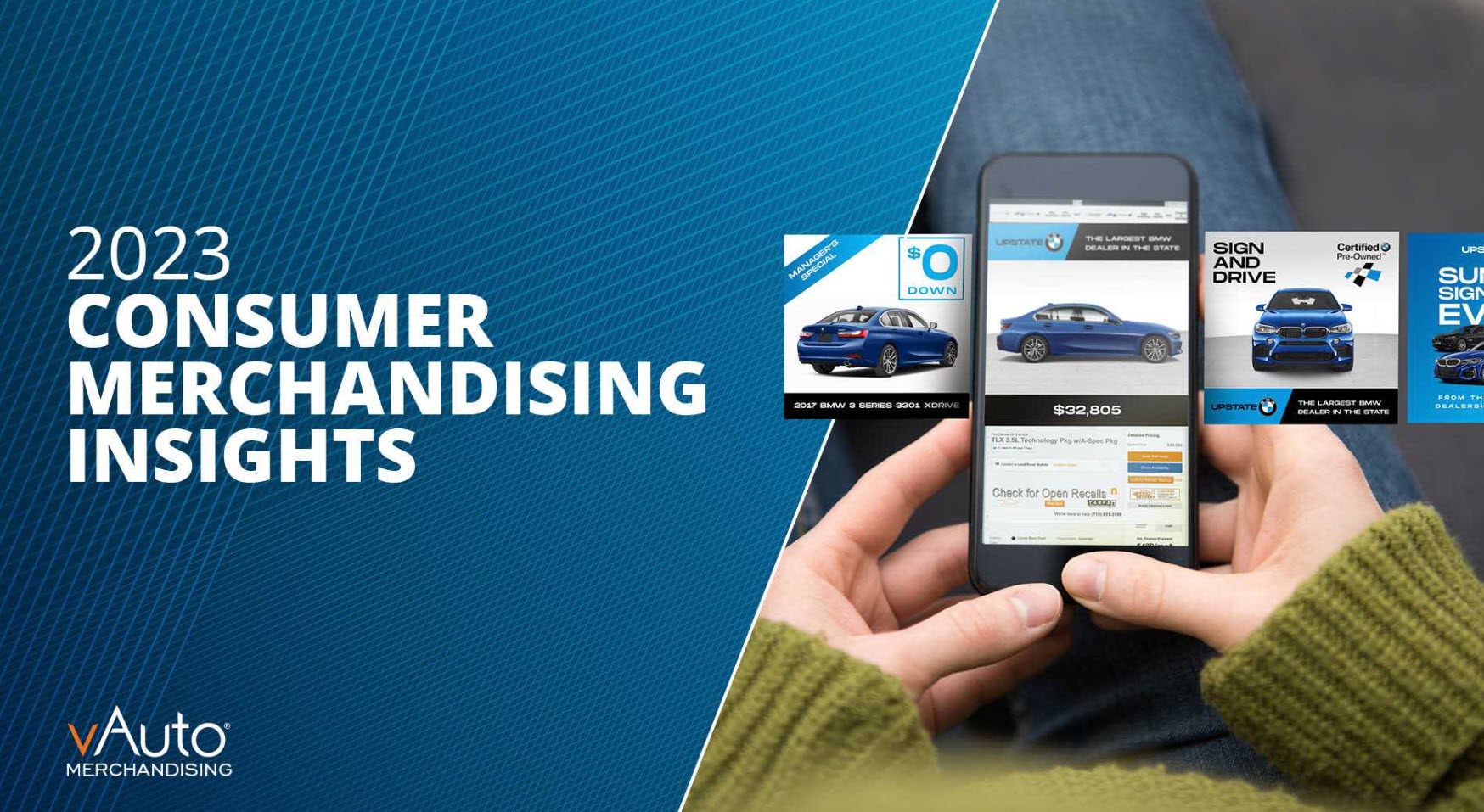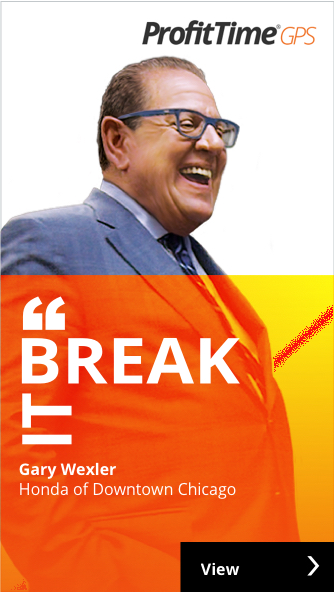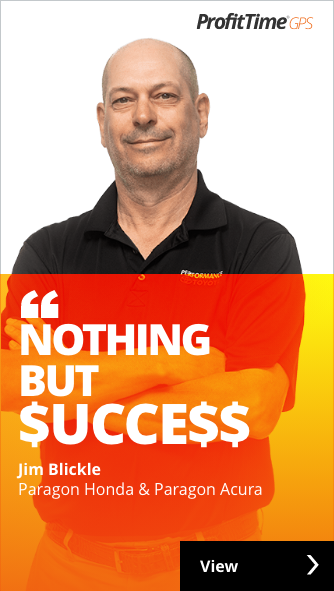ProfitTime in Practice: From Humble Pie To Stellar Gross Profits
General sales manager Sean Hevener of Dennis Eakin Kia, Killeen, TX, had a hefty slice of humble pie last summer.
It happened at a Velocity 20 Group meeting in August in Chicago. Hevener traveled to the meeting with a sense of anticipation.
“I went into this meeting thinking, ‘I wonder what I’m going to be able to teach these guys,’” he says. “I literally thought I was using vAuto and Velocity the right way.”
But when his turn at the table came around, it didn’t go well.
“To say I was humbled would be an understatement,” Hevener says. “I was turning my inventory 5.9 times a year. I remember the 5.9 number because when I said it out loud, the entire group at the meeting turned white. It was like all the oxygen went out of the room.”
Hat in hand, Hevener went home and went to work.
“I came back, and I took a really deep look at this deal,” Hevener says. “I thought I was committed to it, but I wasn’t. I still had the 1990s used car dealer mentality. I thought I could go to the auction, buy cars, and mark them up $3,000. I saw the profits going down. I saw the cars sitting on the lot. I had more than 50 units that were 60 days old and older out of my 100-car inventory. I blamed everything but myself.”
The soul-searching, and a renewed commitment to Velocity, led to an impressive turnaround.
“I basically became obsessed with Velocity,” Hevener says. “I went from a 5.9 annualized turn to 14 in two months. I went from more than 50 cars that were 60 days or older to just five cars. I got the managing inventory by days in inventory down. I delivered 93 cars in August 2018, and I think we did 52 cars in August 2017. We were cooking.”
But, even as he was enjoying the new-found success, Hevener didn’t like what he saw on the financials—specifically his front-end gross profits.
“Being a 1990s/2000s car guy, I was thinking, ‘I’m loving the volume but this gross profit is just awful,’” he says. “Then I got to thinking…I’m making money in service, and I’m not paying as much floorplan interest, and I’m not having to pay curtailments every month. I convinced myself we were doing it right.
“And we were doing it right,” Hevener continues. “We were turning our inventory. We didn’t have an aging problem. We were buying the right inventory. We were paying attention to Cost to Market, and so on and so forth. But the gross profits? It was hard to take.”
That’s why Provision ProfitTime seemed like a winner when Hevener first saw it.
“The whole time I was on Velocity, I always thought I was leaving money on the table, but I was happy with my turn,” he says. “With ProfitTime, I know I’m not leaving money on the table anymore.”
I asked for an example, and Hevener shared the story of a 70-day-old Kia Forte he’d sold a few days earlier.
“It was just a cookie-cutter Forte,” he says. “But for some reason, it hit all the right buttons, and clicked all the right boxes. It was a Platinum car.
“Before ProfitTime, I would have already sold that car. I would have panicked and sold that car in 30 days and made no money. But with ProfitTime, I held on to it. I made $2,800 on the front, and $1500 on the back. That car would have never been in my inventory had it not been for ProfitTime.”
Since he started with ProfitTime about three months ago, Hevener’s front-end gross profit average has doubled, to about $2,000 per vehicle, and his retail sales volume remains steady at 75 to 85 units a month.
I asked Hevener to distill what he considers the big difference-makers in ProfitTime. Here’s what he offered:
It takes the emotion out of decision-making. Take the Kia Forte example above. Hevener’s itchy trigger finger at 30 days is tied to emotion. But ProfitTime’s precious metal designation, in this case, Platinum, gave him a clear-cut understanding that he could, and probably should, continue to hold onto the vehicle and its asking price.
It affirms what you see, and don’t see. Like many dealers, Hevener takes pride in knowing a good or bad car when he sees it. Not long ago, he took in a white, 2015 Toyota Tundra. To his eye, it wasn’t really a vehicle he’d want to retail.
“It was an ugly truck that you probably wouldn’t want on your lot,” Hevener says. “Without ProfitTime, I would have been happy to make $500 just to get rid of it. But ProfitTime told me otherwise. I made $2,000 on it.”
It helps you buy better. Hevener and his appraisers are tuned into ProfitTime’s trifecta—the Money, Market and Mix metrics that tell you if the car makes sense for your market, whether you need the vehicle or not, and the money you stand to make.
“I just had a conversation with an appraiser yesterday,” Hevener says. “We talked about the trifecta. If ProfitTime says it’s a gold car, and that I need two and it’s a C grade, we know we can easily put more money in it to put a deal together, or buy the car at auction or off the street.
“On the flip side, if my ProfitTime Strategy Action says we need to get rid of four or five cars, and it’s a Silver car, and it’s a D grade, then we know we need to be extra cautious about what we buy or trade for the car.”
It’s a fresh, and fun, approach. Hevener isn’t the first ProfitTime dealer to share the sentiment that the investment value-based management methodology feels like a breath of fresh air for a business that sorely needs it.
“The car business got really, really stagnant for me,” Hevener says. “ProfitTime has made it exciting and fun again. It’s given me a completely different way to manage. And I love it.”
In my next ProfitTime in Practice post, I’ll dig deeper into how dealers like Hevener are using ProfitTime to improve the overall investment value and mix of vehicles in their inventories.
The post ProfitTime in Practice: From Humble Pie To Stellar Gross Profits appeared first on Dale Pollak.

















